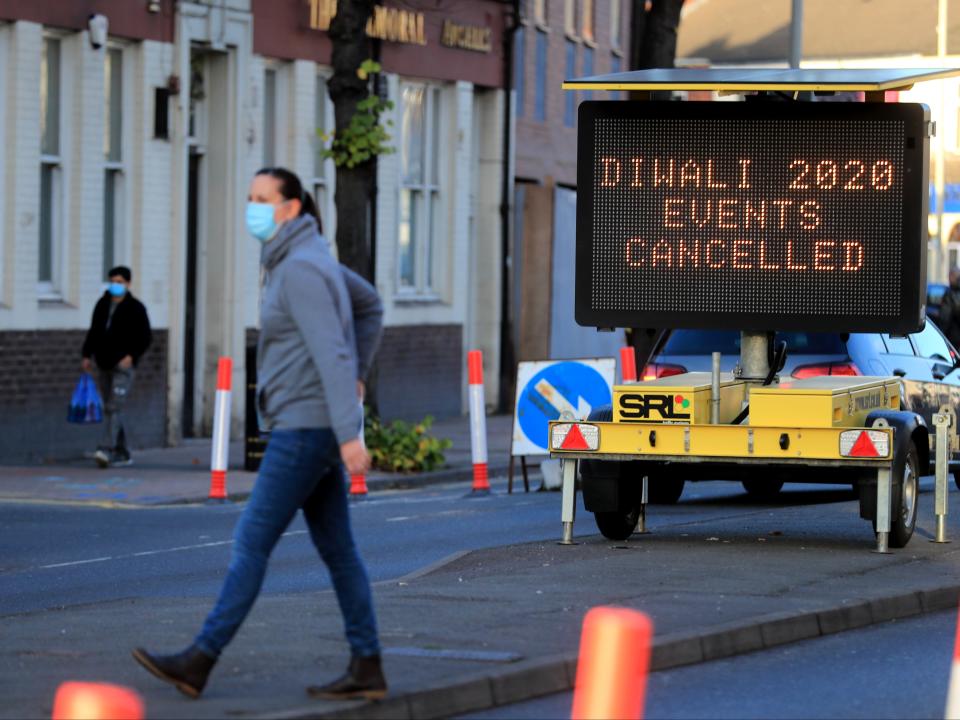Coronavirus: ‘Forgotten’ Leicester could go full year in lockdown, mayor warns as city is placed in strictest tier

Matt Hancock has said the infection rates there were too high
(PA)Some 350,000 people living in Leicester could go a full year in some form of lockdown, its mayor has warned after the city was placed into the strictest tier of the new coronavirus alert system.
Sir Peter Soulsby said it “seemed increasingly probable” the East Midlands jewel could still be facing extensive restrictions come the spring – 12 months after the country was first shuttered.
The city was among a huge swathe of the Midlands – including Nottingham, Birmingham, Derby and Stoke – which were told they would face the country’s tightest measures once lockdown ends next week.
Pubs, restaurants and entertainment venues will be prevented from opening, while families and friends will be banned from meeting in homes or gardens.
Yet unlike any other area, Leicester has never fully come out of the original nationwide lockdown imposed on 23 March. Restrictions in one form or another have remained in place here ever since. People have not yet been able to meet loved ones again in private homes or garden. Residents have taken to calling it “the forgotten city”.
Now, following the new tiers announcement by health secretary Matt Hancock, Sir Peter has warned that the regional economy – as well as people’s wellbeing – could be left scarred for years by such a prolonged period of abnormality.
“We are taking a hammering,” he told The Independent. “We are a fortunate in that we have a broad economic base so there is resilience. We have higher manufacturing than average and that is not as badly impacted as other sectors.
“But you cannot close certain aspects of a city and expect there not to be a long-term impact, in terms of businesses yes but also the emotional toll.”
The directly elected Labour mayor stressed that he believed tier 3 was broadly the right category for the city because infection rates – currently 415 cases per 100,000 people – remain “unacceptably high”.
But he added: “It’s disappointing and frustrating because we are still not being given the tools or the information we need from government to begin to control this infection.”
He said it took an average of just under six days for Whitehall to pass on the names of potentially infected people which NHS Test and Trace could not track down.
“That’s too long,” he said. “Give us that information and we will do the job, and we will get the city moving.”
Jonathan Ashworth, Labour MP for Leicester South and shadow health secretary, further highlighted the area’s plight in the House of Commons on Thursday, saying that grandparents in the city were desperate to hug grandchildren again.
“Those families tonight want to know what the exit strategy is and what voice they will have in that strategy,” he said.
Problems emerged for Leicester in late June when the government announced that, while the rest would be returned to some semblance of normality, the city would continue to have restrictions imposed.
Explaining the decision in a late night sitting of parliament, Mr Hancock said infection rates there were too high.
Non-essential shops remained shut for a significant chunk of the summer, while bars and restaurants were only allowed to open several weeks after the rest of the country. When the first tier system was introduced in October, Leicester was in tier 2. Meeting friends and family in private homes has remained off limits throughout.
Read More
Forgotten city: 100 days on, Leicester still in UK’s longest lockdown
‘Levelling down’: Northern leaders react with fury to new tier system

